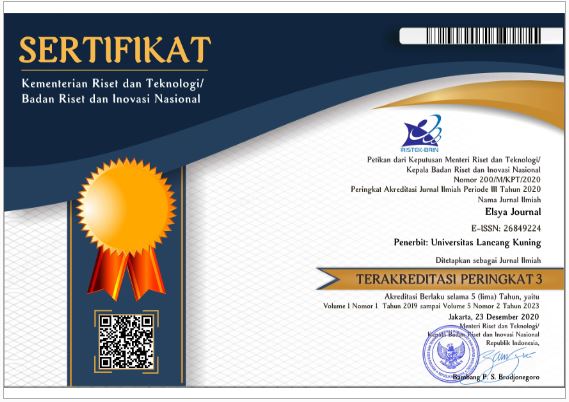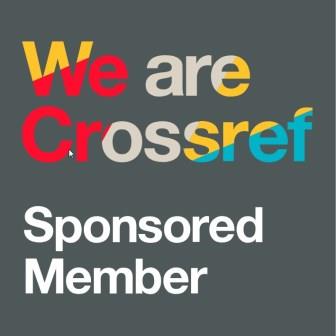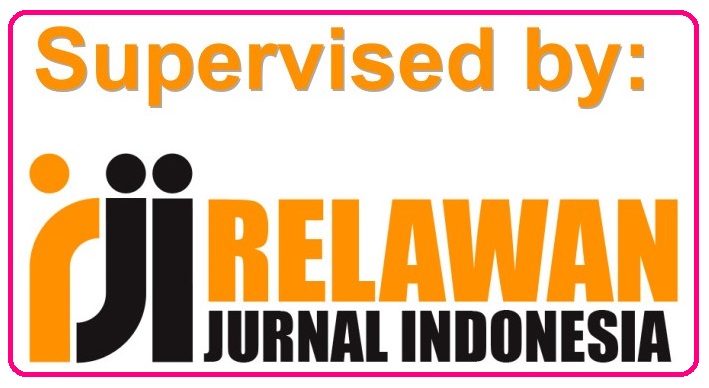A Critical Analysis Comparing the Role of L1 in CLIL and Translanguaging
Abstract
Mother tongue use in the classroom is an emerging practice combatting the old idea of achieving bilingualism through parallel monolingualism. As the discussion of the first language’s (L1) role within pedagogical contexts is still in its relative infancy, a critical analysis which compares how the pedagogical affordances of two recent L2 pedagogical approaches, Content and Language Integrated Learning (CLIL) and Translanguaging, influence language teachers’ pedagogical choices will contribute to the current understanding of how educators clarify the role of L1. Besides its recency, both pedagogies are also chosen as the scope of this discussion because their aims are not solely to gain knowledge of the target language (TL). Funnelling the discussion with two empirical studies which represents the typical application of these pedagogies, this essay found that L1 has three types of facilitating roles, namely class and task management, scaffolding the target language production, and conceptual clarification. A clear distinction between these two pedagogies is established: while CLIL teachers always prioritise TL and treats L1 as a compensatory measure, Translanguaging teachers are authorised to mobilise a wider range of communicative resources rooted in the learners’ mother tongue. This essay recommends further exploration on the role of L1 across other pedagogies to better empower educators in actively and judiciously employing the inevitability of students’ L1 in the classroom to their advantage.
Downloads
References
Bobadilla-Pérez, M., & Galán-Rodríguez, N. (2020). The use of the L1 in a CLIL lesson in Secondary Education in Galicia. Didáctica. Lengua y Literatura, 32, 183–193.
Butzkamm, W., & Caldwell, P. D. J. A. W. (2009). The Bilingual Reform: A Paradigm Shift in Foreign Language Teaching. Tübingen, Germany: Narr Francke Attempto Verlag.
Carroll, K. S. (2016). Concluding remarks: Prestige planning and translanguaging in higher education. In C. M. Mazak & K. S. Carroll (Eds.), Translanguaging in Higher Education: Beyond Monolingual Ideologies (pp. 177–185). Bristol: Multilingual Matters.
Carroll, K. S., & Sambolín Morales, A. N. (2016). Using university students’ L1 as a resource: Translanguaging in a Puerto Rican ESL classroom. Bilingual Research Journal, 39(3- 4), 248–262.
Cenoz, J., & Gorter, D. (2014). Focus on Multilingualism as an Approach in Educational Contexts. In A. Blackledge & A. Creese (Eds.), Heteroglossia as Practice and Pedagogy (pp. 239–254). Dordrecht, Netherlands: Springer.
Cenoz, J., & Gorter, D. (2020). Teaching English through pedagogical translanguaging. World Englishes, 39(2), 300–311.
Coyle, D. (2007). Content and Language Integrated Learning: Towards a Connected Research Agenda for CLIL Pedagogies. International Journal of Bilingual Education and Bilingualism, 10(5), 543–562.
Dalton-Puffer, C. (2011). Content-and-Language Integrated Learning: From Practice to Principles? Annual Review of Applied Linguistics, 31, 182–204.
Dalton-Puffer, C., Nikula, T., & Smit, U. (2010). Language use and language learning in CLIL: Current findings and contentious issues. In C. Dalton-Puffer, T. Nikula, & U. Smit (Eds.), Language use and language learning in CLIL classrooms. Amsterdam: John Benjamins Publishing Company.
Dickson, P. (1996). Using the target language: A view from the classroom. Slough: National Foundation for Educational Research.
Galante, A. (2020). Pedagogical translanguaging in a multilingual English program in Canada: Student and teacher perspectives of challenges. System, 92, 1-10.
García Mayo, M. del P., & Hidalgo, M. de los Á. (2017). L1 use among young EFL mainstream and CLIL learners in task-supported interaction. System, 67, 132–145.
García, O., Bartlett, L., & Kleifgen, J. (2008). From biliteracy to pluriliteracies. In P. Auer & L. Wei (Eds.), Handbook of Multilingualism and Multilingual Communication (pp. 207–228). Boston: De Gruyter.
Garcia, O., & Wei, L. (2013). Translanguaging: Language, Bilingualism and Education. Basingstoke, Hampshire: Palgrave Macmillan
Gierlinger, E. (2015). ‘You can speak German, sir’: On the complexity of teachers’ L1 use in CLIL. Language and Education, 29(4), 347–368.
González Ardeo, J. M. (2013). (In)compatibility of CLIL and ESP courses at university. Language Value, 5(5), 24–47.
González, J. Á., & Barbero, J. (2013). Building bridges between different levels of education: Methodological proposals for CLIL at university. Language Value, 5(1).
Goodman, B., & Tastanbek, S. (2021). Making the Shift From a Codeswitching to a Translanguaging Lens in English Language Teacher Education. TESOL Quarterly, 55(1), 29–53.
Hall, J. K. (2019). The Contributions of Conversation Analysis and Interactional Linguistics to a Usage‐Based Understanding of Language: Expanding the Transdisciplinary Framework. The Modern Language Journal, 103(1), 80–94.
Krashen, S. D. (1985). The input hypothesis: Issues and implications. London: Longman. Lasagabaster, D. (2013). The use of the L1 in CLIL classes: The teachers’ perspective. Latin American Journal of Content & Language Integrated Learning, 6(2), 1–21.
Lin, A. M. Y. (2015). Conceptualising the potential role of L1 in CLIL. Language, Culture and Curriculum, 28(1), 74–89.
Liu, J. E., Lo, Y. Y., & Lin, A. M. Y. (2020). Translanguaging pedagogy in teaching English for Academic Purposes: Researcher-teacher collaboration as a professional development model. System, 92.
Lo, M.-F. (2021). Mediating L2 Learning through Translanguaging in EFL Small Group Task Interaction, (24), 1-31.
Macaro, E. (2001). Analysing Student Teachers’ Codeswitching in Foreign Language Classrooms: Theories and Decision Making. The Modern Language Journal, 85(4), 531–548.
Macaro, E. (2005). Codeswitching in the L2 Classroom: A Communication and Learning Strategy. In E. Llurda (Ed.), Non-Native Language Teachers: Perceptions, Challenges and Contributions to the Profession (pp. 63–84). New York: Springer.
Macdonald, C. (1993). Using the target language. Cheltenham: Mary Glasgow Publications. Marsh, D. (2013). Content an Language Integrated Learning (CLIL). A Development Trajectory. Retrieved from http://helvia.uco.es/xmlui/handle/10396/8689
Martínez-Adrián, M. (2020). ¿Los juntamos? A study of L1 use in interactional strategies in CLIL vs. NON-CLIL primary school learners. International Review of Applied Linguistics in Language Teaching, 58(1), 1–27.
Martínez-Adrián, M., Gutiérrez-Mangado, M. J., & Gallardo-del-Puerto, F. (2019). Introduction: L1 use in content-based and CLIL settings. International Journal of Bilingual Education and Bilingualism, 22(1), 1–4.
Mauranen, A. (2018). Second Language Acquisition, world Englishes, and English as a Lingua Franca (ELF). World Englishes, 37(1), 106–119.
Mazak, C. M. (2016). Introduction: Theorizing Translanguaging Practices in Higher Education. In C. M. Mazak & K. S. Carroll (Eds.), Translanguaging Practices in Higher Education: Beyond monolingual Ideologies (pp. 1–10). Bristol: Multilingual Matters.
Nijhawan, S. (2022). Translanguaging… or trans-foreign-languaging?: A comprehensive Content and Language Integrated Learning (CLIL) teaching model with judicious and principled L1 use. Translation and Translanguaging in Multilingual Contexts, 8(2), 143–185.
Pladevall-Ballester, E., & Vraciu, A. (2017). Exploring Early EFL: L1 Use in Oral Narratives by CLIL and Non-CLIL Primary School Learners. In M. del P. García Mayo (Ed.), Learning Foreign Languages in Primary School (pp. 124–148). Bristol: Multilingual Matters.
Shin, J.-Y., Dixon, L. Q., & Choi, Y. (2020). An updated review on use of L1 in foreign language classrooms. Journal of Multilingual and Multicultural Development, 41(5), 406–419.
Storch, N., & Aldosari, A. (2010). Learners’ use of first language (Arabic) in pair work in an EFL class. Language Teaching Research : LTR, 14(4), 355–375.
Wannagat, U. (2007). Learning through L2 – Content and Language Integrated Learning (CLIL) and English as Medium of Instruction (EMI). International Journal of Bilingual Education and Bilingualism, 10(5), 663–682.
Wei, L. (2018). Translanguaging as a Practical Theory of Language. Applied Linguistics, 39(1), 9–30.
Zhou, X. (2021). Engaging in pedagogical translanguaging in a Shanghai EFL high school class. ELT Journal, 1-10.
- Author retains the copyright and grants Elsya Journal the right of first publication of the work simultaneously licensed under the Creative Commons Attribution-ShareAlike 4.0 License that allows others to share the work with an acknowledgment of the work's authorship and initial publication in this journal
- The author is able to enter into separate, additional contractual arrangements for the non-exclusive distribution of the journal's published version of the work (e.g., post it to an institutional repository or publish it in a book) with the acknowledgment of its initial publication in this journal.
- The author is permitted and encouraged to post his/her work online (e.g., in institutional repositories or on their website) prior to and during the submission process, as it can lead to productive exchanges, as well as earlier and greater citation of the published work (See The Effect of Open Access).









 Elsya Journal is licensed under
Elsya Journal is licensed under 